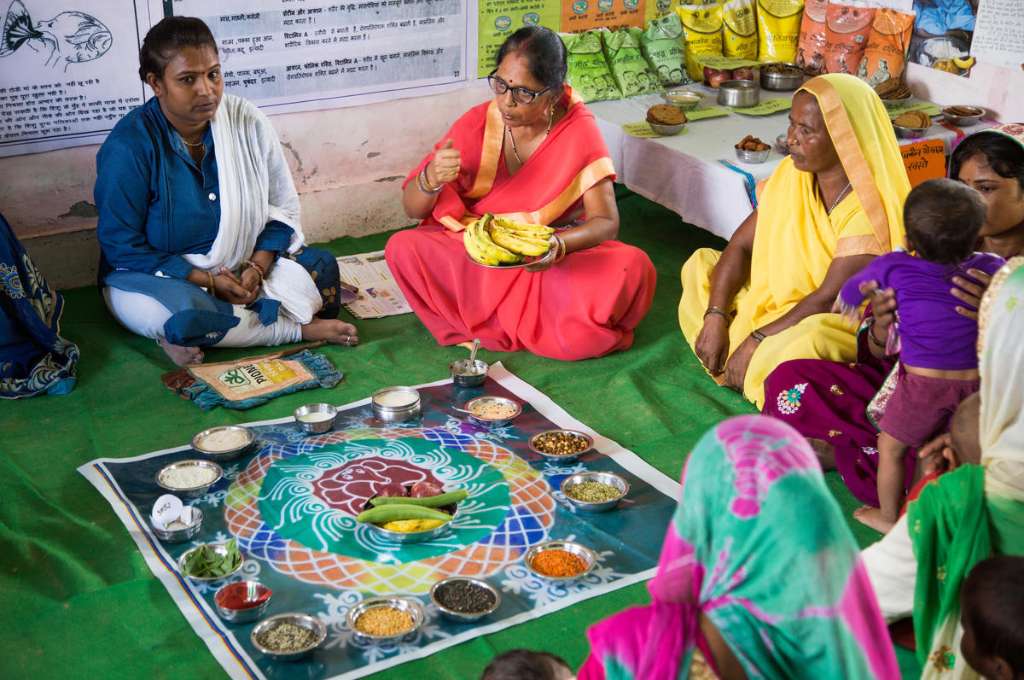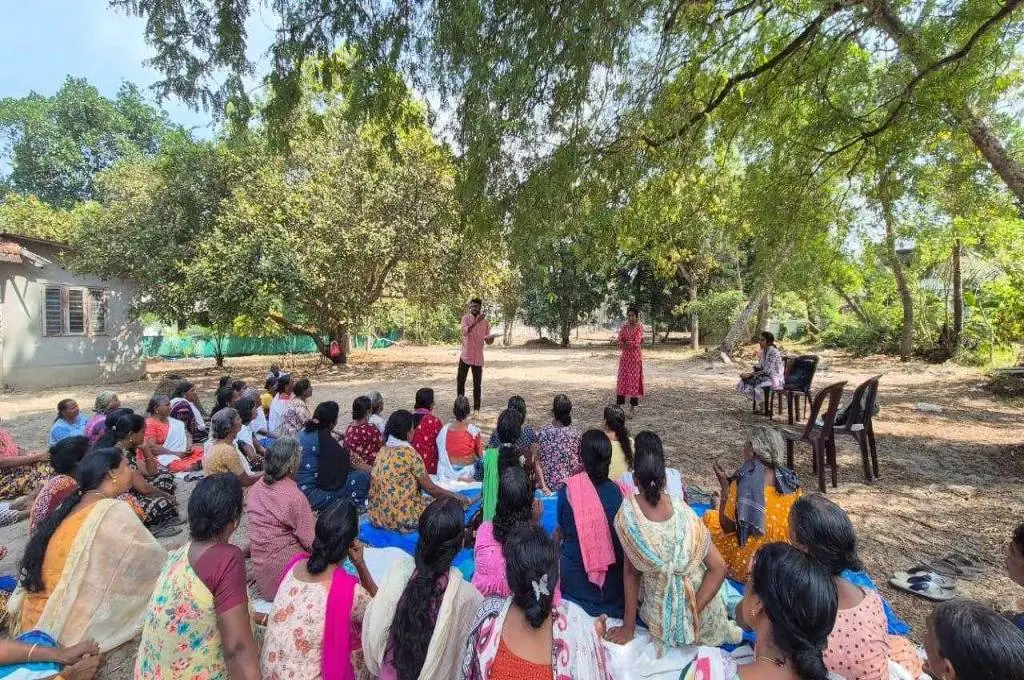Non-communicable diseases (NCDs)—cardiovascular diseases, cancers, chronic respiratory diseases, and diabetes—are becoming a cause for concern across different socio-economic groups and regions in the country. In urban India, the rise of fast food, busy work schedules, inactivity due to sedentary lifestyles, and lack of time for meal preparation have contributed to an increase in NCDs such as hypertension and diabetes. In rural India, lack of access to nutritious diets is resulting in a number of NCDs. Additionally, traditional beliefs and cultural practices may discourage the consumption of certain foods, leading to a less diverse and less balanced diet.
Recognising the growing burden of NCDs in the country, the Indian government launched the National Health Policy in 2017 to prioritise the prevention and control of such diseases. The policy includes measures such as promoting healthy lifestyles, increasing access to affordable and quality health services, and improving surveillance and monitoring of NCDs. However, despite the steps taken by the government, efforts to control NCDs focus more on screening, monitoring, treatment, and referral and less on prevention. India’s primary health system is geared towards screening people in large numbers for diabetes and hypertension and referring them for clinical care and treatment.
While screening and testing for NCDs is important, it is an extremely resource-intensive exercise. Given the numbers—approximately 136 million people in India are pre-diabetic and more than 50 percent are unaware of their diabetic status—it is nearly impossible to focus just on treatment as our way out of the crisis. Therefore, it is essential to manage the problem with the help of prevention-focused interventions—based on behavioural change—that encourage lifestyle modifications and adoption of healthy habits.

This article is based on our learnings from our work on NCD prevention in India, and highlights how programmes can reach the required scale with tech-based interventions and through collaborations among various stakeholders.
1. Take prevention to the doorstep
Early detection and prevention of NCDs is key to controlling them. However, many people still view them as diseases that only affect the elderly and may not even get tested for NCDs such as hypertension and diabetes. It is crucial, therefore, to spread awareness about NCDs and why they need to be taken seriously, as well as educate individuals on healthy behaviours that they can adopt to prevent them. This makes it necessary to take NCD prevention interventions to where the people are—schools, homes, and workplaces.
Keeping this in mind, we launched the MyThali programme to promote healthy dietary choices among urban women, who are more prone to diabetes. Based on the success of MyPlate by the US Department of Agriculture, we translated India’s National Institute of Nutrition guidelines into an easy-to-follow image that we then disseminated through social media. We engaged with micro-influencers in the health and nutrition, lifestyle, food and travel space in order to reach urban women looking for nutrition advice from credible sources. Another reason for collaborating with influencers was to make healthy eating aspirational and accessible while simultaneously increasing awareness about it to prevent lifestyle diseases.

2. Intervene early
Many NCDs have their origin in childhood, and are shaped by lifestyle and environmental factors. According to a study by the Indian Council of Medical Research, the prevalence of diabetes and pre-diabetes among adolescents in India ranges from 12.5 percent to 14.5 percent. The study also found obesity to be a major risk factor for diabetes among adolescents. Research shows that urban adolescents are more likely to suffer from NCDs than rural adolescents, mainly due to lifestyle factors such as physical inactivity, unhealthy diets, and excessive screen time. Adolescents from lower socio-economic groups are also at a higher risk of NCDs, as they have limited access to healthcare services, education, and information on healthy lifestyles.
Peer-led group discussions as well as age-appropriate, compelling games and activities can be used to teach adolescents good lifestyle habits.
Therefore, it is crucial to intervene when children are in the early adolescent years so that healthy habit formation and lifestyles for the future can be encouraged. In 2011, based on the school education model for tobacco control, we developed a two-year school-based programme for diabetes awareness and prevention. Through a network of teachers and student peer leaders, the programme aimed to educate 11–14-year-olds about the benefits of increasing physical activity and improving dietary intake. We used peer-led group discussions as well as age-appropriate, compelling games and activities to teach adolescents good lifestyle habits. For example, the game of snakes and ladders was used in classrooms to explain the difference between healthy and unhealthy dietary choices, with a bag of chips depicted by a ‘snake’ and eating fruits and vegetables represented by a ‘ladder’.

We realised though that it was first important to build awareness among teachers in schools. For this, we worked with various partners such as CINI and SRU Innovations to conduct workshops and learning sessions about NCDs with teachers. The teachers were encouraged to carry out these games with children in classrooms, and integrate the messaging of healthy eating habits and physical activity through their teaching.
3. Collaborate with multiple stakeholders
In order to enable the prevention of NCDs in a country as large as India, programmes must be designed keeping scale in mind. A gamut of knowledge, research, and learnings already exists in the form of public and private organisations that work on NCD screening, prevention, and management. These include the Public Health Foundation of India, Madras Diabetes Research Foundation, Indian Council of Medical Research, All India Institute of Medical Sciences, PATH, and The George Institute. Collaboration and coordination among these organisations is essential to maximise resources and impact.
Nonprofits can leverage the networks of NCD organisations to share knowledge, expertise, and resources, and to develop and implement joint programmes and initiatives. This also helps in bridging the trust deficit communities may have when approached by a new organisation.
For example, for the MyThali programme, which was originally developed for urban women, we partnered with PATH—a nonprofit focused on improving health equity in the country—to adapt it for rural adolescent girls. PATH brought in stakeholders—from policymakers to nutrition experts—to deliberate on core elements of the existing programme’s content and tweak it for adolescent girls. We used this to develop an eight-page comic book and activity booklet, which were then disseminated across schools we were working with.
4. Leverage technology effectively
Technology not only allows for programmes to reach otherwise isolated locations, but also permits the continuous circulation of knowledge. Using technology such as text messages can be an important means of enabling behaviour change. As part of our mDiabetes programme (a text/voice-message-based diabetes prevention programme), the team sent 56 messages twice a week for 6 months to more than one million people. Focused on informing about diabetes and its prevention, these messages were sent in 12 different languages including English, Hindi, Kannada, and Tamil. The content of the messages was developed with the objective of highlighting the benefits of adopting healthy lifestyles and acting as nudges for behaviour change, such as eating two to three fruits and vegetables a day, avoiding fried food, and increasing physical activity.
When it comes to imagining a future without NCDs, interventions that focus on prevention are key. And in order to address the problem at scale, coordinated and collective efforts are essential, wherein all stakeholders work together to build an environment conducive to healthy living for the population at large.
—
Know more
- Read this article to understand what is causing the growing prevalence of diabetes in rural India.
- Read this article to learn why women and girls are at a higher risk of NCDs.
- Read this study to learn more about public health interventions for prevention and control of NCDs in relation to India.




